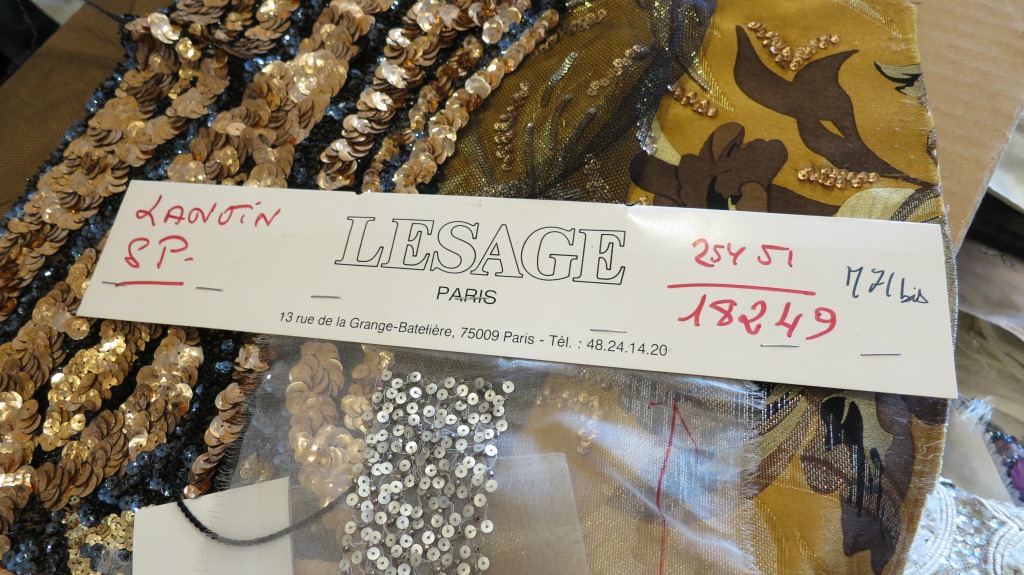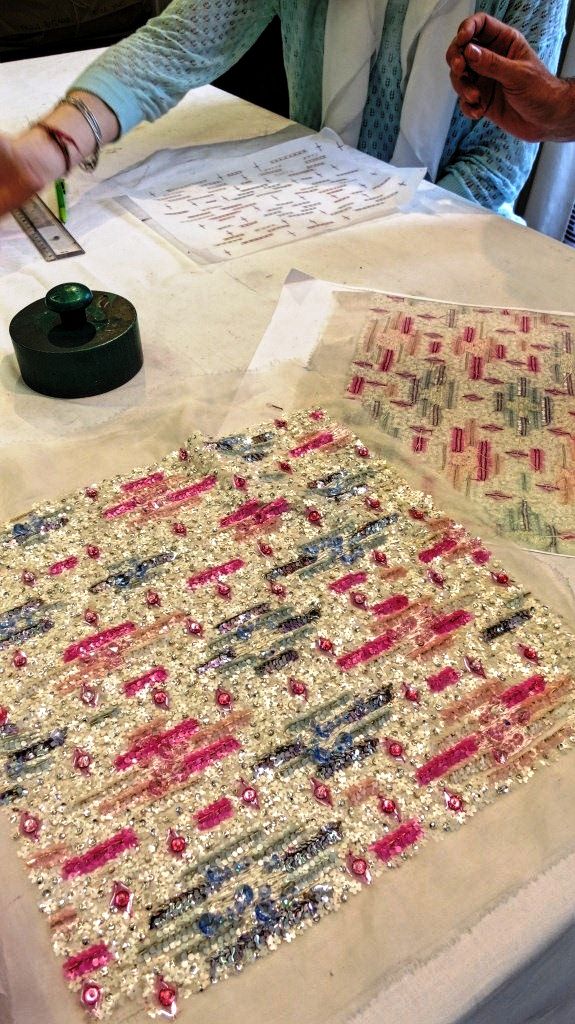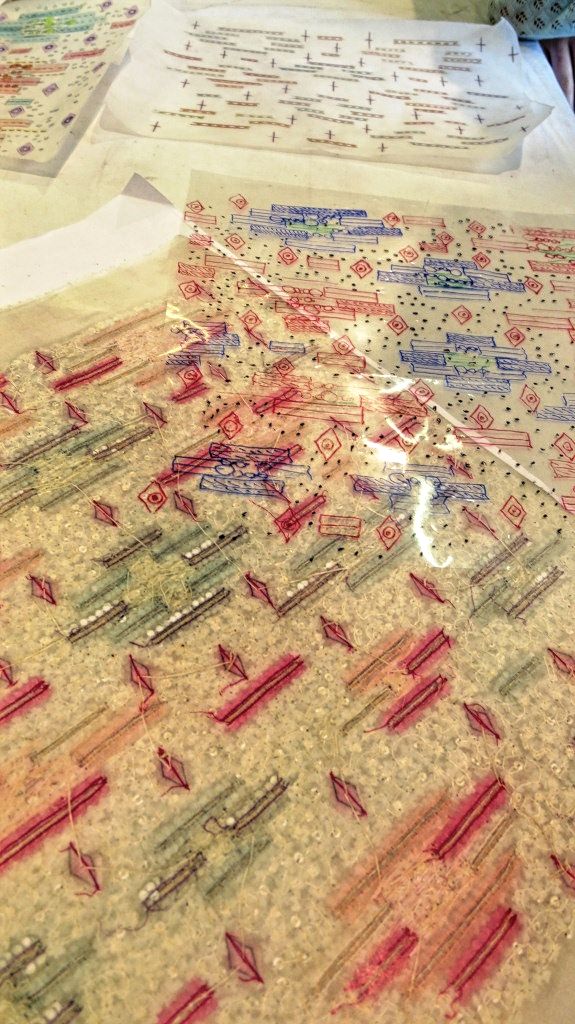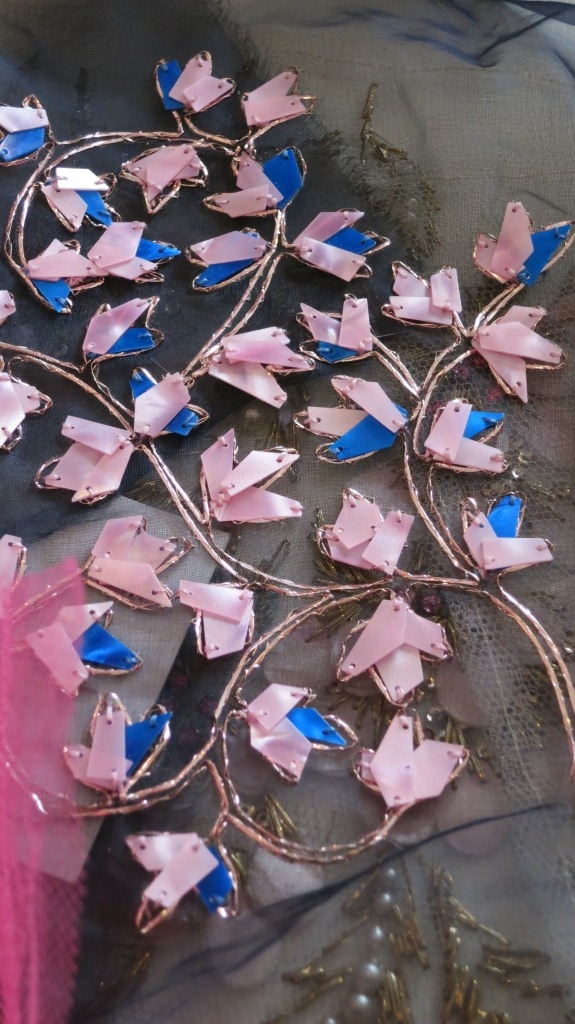Maison Lesage: How its Atelier Realizes Dreams
Photo credit: @Couturenotebook
As the head of embroidery house Lesage, Hubert Barrère is creating “food” for designers’ creative inspirations and continuing the long tradition of stunning craftsmanship so closely associated with the world of Haute Couture.
Chanel, Dior, Valentino, Alexandre Vauthier, Gustavo Lins, Bouchra Jarrar, Didit Hediprasetyo and Jantaminau.... besides showing during Haute Couture week’s official or unofficial calendar, these diverse couturiers had all one thing in common on their runaway this July: exclusive creations by the famed embroidery atelier of Lesage.
Founded in the 1920s by Albert and Marie-Louise Lesage, who had taken over an embroidery workshop that supplied the first great names in couture (Frederick Worth, Jean Paquin and Madeleine Vionnet), the maison Lesage quickly made a name for itself with its technical innovations (straight-grain ‘vermicelli’ beadings) and avant-garde motifs of shells, circus performers and zodiac signs realizing all the embroideries of Elsa Schiaperelli. After the war, Francois Lesage, the son of Albert and Marie-Louise, took over control of the house and quickly won the trust of new clients like Pierre Balmain, Cristóbal Balenciaga, Christian Dior, Hubert de Givenchy, Christian Lacroix and Yves Saint Laurent (most famously recreating Van Gogh’s irises for him).
“Embroidery is to haute couture
what fireworks are to Bastille Day”
Though Lesage was bought by Chanel in 2002, the atelier has retained its independence, continuing to work for all the top couture houses, and is responsible for many of beadings and embroideries that grace the famous Parisian couture collections.
Each seasons, the few weeks before these couture collections are a mad rush with the workshops working round the clock to bring the most extravagant ideas to life. “Time is always the key challenge. This season the first designers came in May and gave us something to do in June.. But many designers came to us mid-June with their final request to present early July. It’s always a mad hell, because such works necessitate hundreds of hours and even though we have about 100 workers or petite mains it is still a gigantic work each time,” explains Lesage’s Artistic Director Hubert Barrère, who took over the maison after the passing of Francois Lesage last year.
“Very few metiers are under such a precise timing. If the Chanel show is on Tuesday at 10am, it just has to be ready. There is no fudging the deadline. It’s an absolute stress ... You have a deadline and you see the time slowly drifting away. But you can’t refuse. It’s not a word that exists at Lesage,” he adds.
With 60,000 samples accumulated over its long history, the Lesage archives represent the biggest collection of couture embroidery in the world, with the atelier adding to this rich heritage every year with around a hundred of new embroideries designs.
“Our job is to give intellectual and creative food to the couturier. Though the archives are a source of inspiration, we always create a new sample for the designer,” Barrère says, explaining that a designer will usually come to the atelier with an idea or a general theme, which then needs to be “translated and refined.”
“For example this year with Raf Simmons for Dior it was ‘taking back the Dior Code of the 1950s,” so we look into the 1950s archives, but he also wanted ‘saturated colors and a great purity and simplicity.‘ So we tried to minimalize certain thing and recolored them. With Mr. Lagerfeld, it was ‘pink with the spirit of new vintage.’ These were two different visions of vintage, which was very interesting. At Dior, Ralf Simons went back in time to look at the code, simplify them to bring them to date. Whether Karl’s new vintage was completely the opposite. He knows perfectly the code and with him vintage is already out of fashion in 6 months, so he creates the vintage of tomorrow. Of course, the designers don’t tell us that, but that’s what you have to breath in and deduct,” he says.
Being a designer himself probably helps Barrère grasps these ideas better.
Having study design at the Ecole de la Chambre Syndicale de la Couture, Barrère showed early on an affinity for “decoration more than design per se.”
“I could have joined a couture house as an unpaid intern, but I needed to reimburse my student loan and the embroiderer Maison Vermont was looking for someone to design fabric,” he recalls. He joined its atelier in xxx and soon was working for couturiers like Hubert de Givenchy, Yves Saint Laurent and Marc Bohan at Dior. “It was a fantastic door to enter in the inner circle of couture because I got the opportunity to meet early on all these great couturiers, which at the time were using embroideries much more than today” he says.
After a two year sting with Vermont, Barrère had a diverse career working along Thierry Mugler, Daniel Swarovski and then costume designer Vicaire, where he developed a detailed knowledge of historic clothing and embroidery and started a love affair with the corset.
“Corsetry has been the foundation of women’s clothing over the ages. But for me a corset is about liberty. Today it’s not a carcan imposed, but a choice a woman makes. Many couture dresses have actually a loose corset foundation inside to keep it all in and create a curvy silthouette,” he explains
In 1995, Barrère launched his own collection of corset, which quickly won him some plaudits as he received the following year the Grand Prix de la Mode de la Ville de Paris. Soon he was designing corsets for Alexandre McQueen and John Galliano at Dior. Ever a multi-tasker,
Barrère also joined Maison Hurel, another famed Parisian embroidery house, as its creative director, staying there for 14 years, and although the corset remains his favorite garment and the basis of his work, he does not want to limit himself to corsets alone and has since 2001 presented his own collection of clothes which allow him to express his artistry in corsetry while exploring new horizons with designs in tulle and muslin held in place solely by bones.
Barrère is the first to admit he’s no artisan. “I know how to draw and I think I have some idea of what good taste is, but I can’t sew and I can’t embroider, I’m not an artisan or technician. When I draw I don’t think about embroidery technique. On the contrary, you need to go beyond the technique, though of course I know what can be done. But you must forget it in order to free your creative spirit,” he explains
For now, Barrère is concentrating on the new challenge of Lesage and has put aside his own presentations. “But it’s going to continue,” he muses.
First published in Couture by Designare Vol 3









